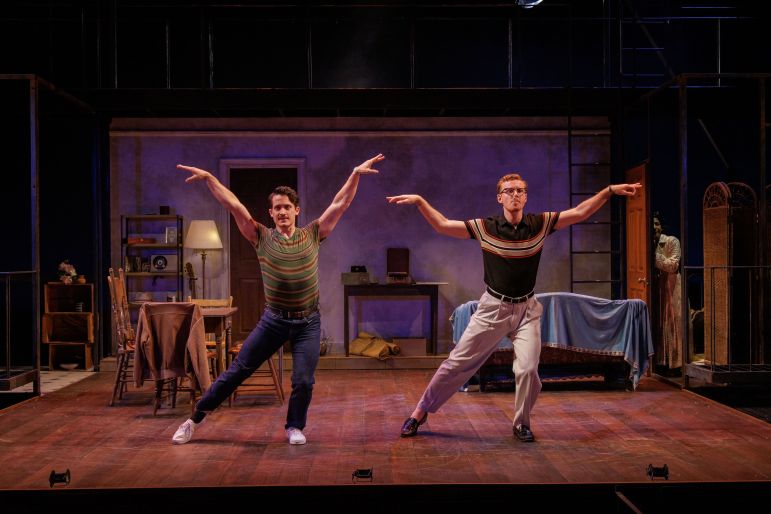
When new artistic director Elizabeth Williamson planned Geva’s 50th season, she began very simply. She contacted artists she had met over her years working on Broadway, London’s West End, and other theaters, and asked them: “What story do you want to tell?”
“It really was just a matter of speaking with the brilliant talent working today and letting them tell me what they wanted,” Williamson says with a laugh. “When I came to (Tony-award-winning playwright) Matthew (Lopez), he said, ‘With the “West Side Story” movie coming out, I think we need to return to “Somewhere”.’ And he was so right.”

“Somewhere,” Geva’s current main stage production, has scheduled its opening night this weekend. The title is a reference to the seminal love ballad from “West Side Story.” As a work, it aims to be a love letter to Broadway, a reckoning with the performing art world’s complex history of exploitation and erasure, as well as a celebration of the Puerto Rican experience in the United States.
Set in New York City’s San Juan Hill neighborhood in 1959, it weaves real-life events into a fictional story of a Puerto Rican family. As their building is set for demolition to make way for the Lincoln Center for the Performing Arts and they face possible eviction, the Candelaria siblings still try to keep their dream of dancing in the “West Side Story” movie alive.
“The dancing is fantastic; (director) Zi Alikhan assembled a company of performers who can both dance and act. The choreography is by Karla Puno Garcia, a brilliant up-and-coming talent, and is high energy but also emotional. Julian Hornik is our composer and told the dancers, ‘Your dance is the lyrics to the music,’” says Williamson, who describes “Somewhere” as a “half-musical” with both diegetic and nondiegetic dance numbers. “Sometimes the emotions are so big, you have to dance them out.”
Williamson worked with Lopez when he developed “Somewhere” as a playwright in residence at the Hartford theater. She notes that its structure is based in a dramaturgical style that was historically white-dominated.
“As much as it’s a sense of telling a different, overlooked side of the story, Matthew also wrote it to honor the other great playwrights of the mid-century like Tenessee Williams or Arthur Miller,” she says. “The characters in it love dancing and performance. So, also it’s a love letter to the theater world in a way.”

In addition to the main stage shows, Williamson is also excited for events by Director of Engagement Rachel DeGuzman, including a new series, Mondays at Geva. For theaters, Monday is traditionally a day with no shows. Instead of being completely dark, however, Mondays at Geva will use that time to showcase other local visual artists, performers, musicians and speakers that add to the understanding of the main stage show.
The event series will begin Monday, with work from graffiti artist Victor “Range” Zarate of group Fau Krew and a performance by Borinquen Dance Theatre with accompaniment by percussionist Ramon “Sunshine” Perez.
“It will be thrilling to have their energy in the theater,” Williamson says.
She believes that creating spaces for shared energy has the power to change hearts and minds. Williamson references a 2017 study by University College London, which found that, by watching live theater performances, the heartbeats of audience members synchronized, similar to a phenomenon seen in romantic partners or highly effective teammates.
“I’m not a scientist, but it rings incredibly true to me. The performing arts have a way of binding us together unlike any other,” Williamson says. “As we become more polarized as a society or have to rely on interacting through screens like we did (at the height of the COVID pandemic), I hope theater is a way we can bridge our gaps and move toward empathy.”
Jacob Schermerhorn is a Rochester Beacon contributing writer. The Beacon welcomes comments from readers who adhere to our comment policy including use of their full, real name.